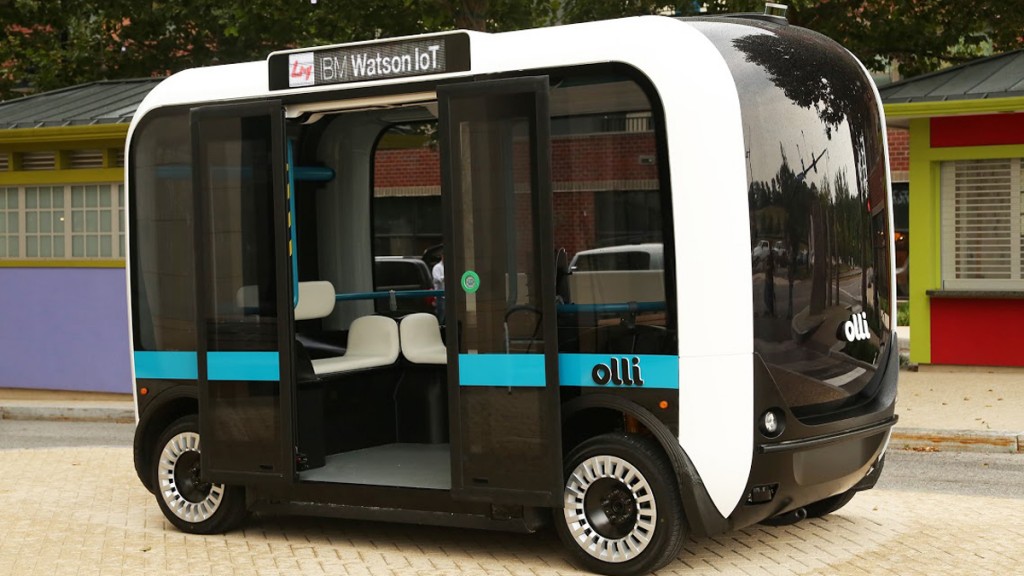
Self-driving cars make the news more or less daily – but when autonomous vehicles start populating our streets, they won’t necessarily belong to individuals.
I’ve never driven a car, and never plan to. I live in a densely populated city with excellent buses and trains. Like millions of other people, I can get anywhere I want without sitting in a car.
Cars are expensive to buy, expensive to insure, and expensive to maintain. And though their price will drop over time, the same issues will dog electric cars.
Specialist US vehicle manufacturer Local Motors has realised that. That’s why it’s developed a self-driving minibus, set to start operating in the US before the year is out.
“Olli”, which looks a bit like a squashed airport shuttle, can carry up to 12 people. It uses data from 30 embedded sensors to analyse huge volumes of transportation data, adjusting its methods and performance according to the information it receives. The more Olli drives, the better it gets.
That much is familiar. But Olli does more than just drive people from one place to another. The smart vehicle uses IBM’s “Watson” technology to interact with passengers, who can ask Olli how long it’ll take to get into town, or how to use one of the vehicle’s features.
Passengers can simply tell Olli they’re hungry, and the vehicle will recommend a restaurant. If the weather forecast is bad, Olli will remind you to bring an umbrella.
Just like Olli’s ability to drive, these features improve with use. So if passengers show a preference for Bob’s Seafood over Janet’s Pasta Paradise, Olli will remember, and be more likely to remember it next time.
Natural language processing makes computers human
Olli’s capabilities are quite astounding: the vehicle doesn’t sound halting or robotic when it talks, t sounds dynamic and intelligent.
Natural language processing (NLP) – the ability of a computer to understand human speech – is going to become increasingly important. Talking to your smartphone assistant is already commonplace(ish), but asking your fridge how full it is isn’t far off.
These things aren’t unconnected. As the internet of things (IoT) becomes more expansive – as more data is collected from all our connected devices – those devices will work more effectively.
What makes IBM’s Watson IoT so effective is its ability to structure a mass of unstructured data, providing Olli passengers with information that is pertinent to their trip. There wouldn’t be much point in the vehicle telling you how far away the car in front is – but news of a traffic jam between you and your destination would be worth relaying.
In the promotional video for his product, Local Motors CEO Jay Rogers interacts very smoothly indeed with Olli. He uses colloquial language, which the system understands easily; when he greets the machine, it compliments him on his bow tie.
Of course, Olli might work less well in real time (or when it’s not talking to the man who helped build it), but if it’s even a little bit as responsive as it looks, it’s revolutionary. And, as Rogers stresses, this isn’t a prototype. Ten vehicles have already been sold.
By the time this technology is widespread, it will be even better. The idea of an unsocial vehicle will be as foreign as the idea of a Model T is today.